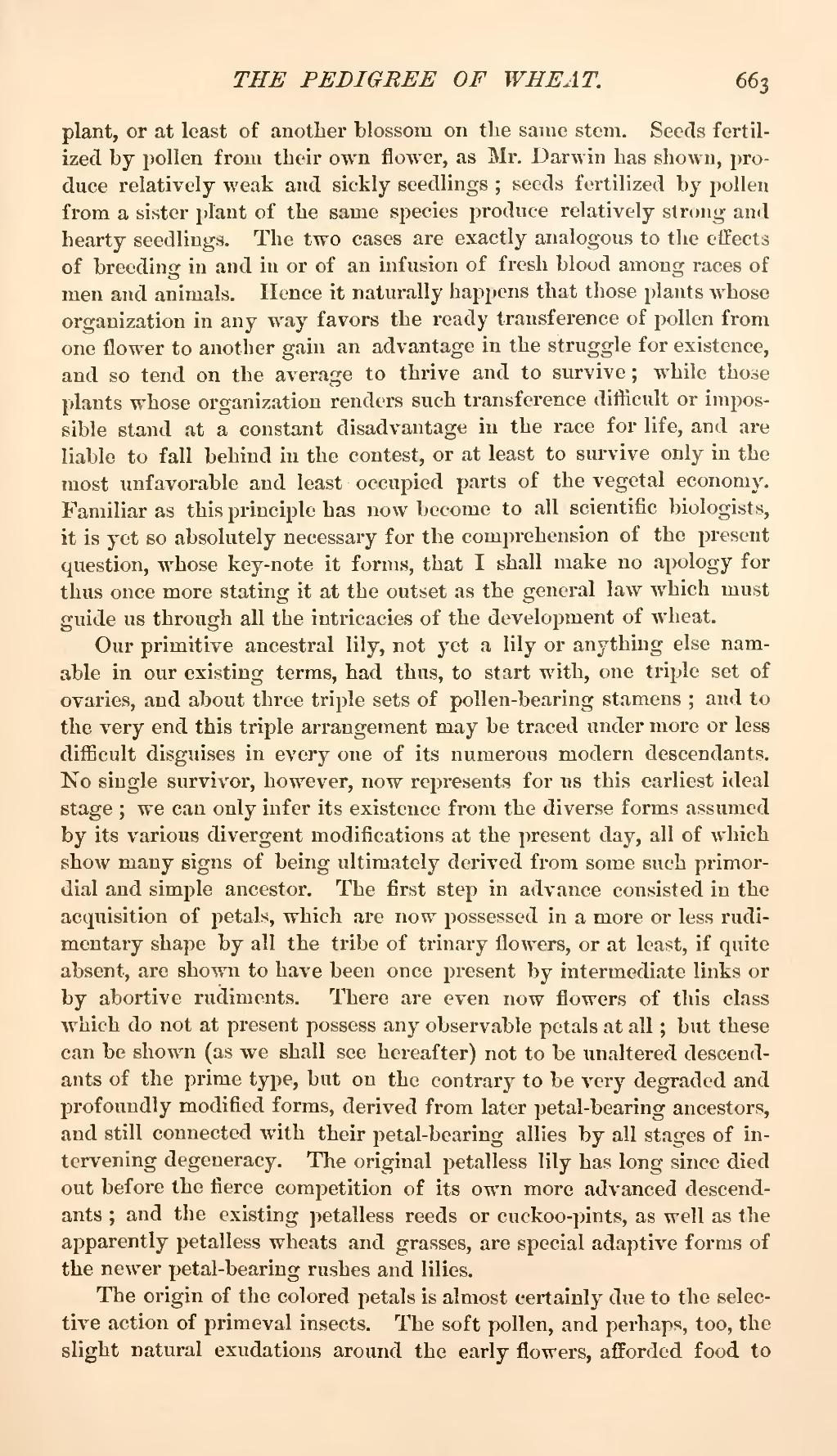plant, or at least of another blossom on the same stem. Seeds fertilized by pollen from their own flower, as Mr. Darwin has shown, produce relatively weak and sickly seedlings; seeds fertilized by pollen from a sister plant of the same species produce relatively strong and hearty seedlings. The two cases are exactly analogous to the effects of breeding in and in or of an infusion of fresh blood among races of men and animals. Hence it naturally happens that those plants whose organization in any way favors the ready transference of pollen from one flower to another gain an advantage in the struggle for existence, and so tend on the average to thrive and to survive; while those plants whose organization renders such transference difficult or impossible stand at a constant disadvantage in the race for life, and are liable to fall behind in the contest, or at least to survive only in the most unfavorable and least occupied parts of the vegetal economy. Familiar as this principle has now become to all scientific biologists, it is yet so absolutely necessary for the comprehension of the present question, whose key-note it forms, that I shall make no apology for thus once more stating it at the outset as the general law which must guide us through all the intricacies of the development of wheat.
Our primitive ancestral lily, not yet a lily or anything else namable in our existing terms, had thus, to start with, one triple set of ovaries, and about three triple sets of pollen-bearing stamens; and to the very end this triple arrangement may be traced under more or less difficult disguises in every one of its numerous modern descendants. No single survivor, however, now represents for us this earliest ideal stage; we can only infer its existence from the diverse forms assumed by its various divergent modifications at the present day, all of which show many signs of being ultimately derived from some such primordial and simple ancestor. The first step in advance consisted in the acquisition of petals, which are now possessed in a more or less rudimentary shape by all the tribe of trinary flowers, or at least, if quite absent, are shown to have been once present by intermediate links or by abortive rudiments. There are even now flowers of this class which do not at present possess any observable petals at all; but these can be shown (as we shall see hereafter) not to be unaltered descendants of the prime type, but on the contrary to be very degraded and profoundly modified forms, derived from later petal-bearing ancestors, and still connected with their petal-bearing allies by all stages of intervening degeneracy. The original petalless lily has long since died out before the fierce competition of its own more advanced descendants; and the existing petalless reeds or cuckoo-pints, as well as the apparently petalless wheats and grasses, are special adaptive forms of the newer petal-bearing rushes and lilies.
The origin of the colored petals is almost certainly due to the selective action of primeval insects. The soft pollen, and perhaps, too, the slight natural exudations around the early flowers, afforded food to

